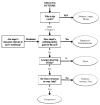Compassion: an evolutionary analysis and empirical review - PubMed (original) (raw)
Review
Compassion: an evolutionary analysis and empirical review
Jennifer L Goetz et al. Psychol Bull. 2010 May.
Abstract
What is compassion? And how did it evolve? In this review, we integrate 3 evolutionary arguments that converge on the hypothesis that compassion evolved as a distinct affective experience whose primary function is to facilitate cooperation and protection of the weak and those who suffer. Our empirical review reveals compassion to have distinct appraisal processes attuned to undeserved suffering; distinct signaling behavior related to caregiving patterns of touch, posture, and vocalization; and a phenomenological experience and physiological response that orients the individual to social approach. This response profile of compassion differs from those of distress, sadness, and love, suggesting that compassion is indeed a distinct emotion. We conclude by considering how compassion shapes moral judgment and action, how it varies across different cultures, and how it may engage specific patterns of neural activation, as well as emerging directions of research.
(c) 2010 APA, all rights reserved.
Figures
Figure 1
Appraisal model of compassion displaying how witnessing negative outcomes leads to felt compassion with moderation of relevance to self.
Figure 2
Recognition accuracy of compassion, fear, sadness, and happiness by expression modality. Accuracy rates corrected for number of choices. Facial expression findings averaged from Haidt & Keltner (1999) and Keltner & Buswell (1996); touch findings from Hertenstein et al. (2006).
Similar articles
- Definition of compassion-evoking images in a Mexican sample.
Mercadillo RE, Barrios FA, Díaz JL. Mercadillo RE, et al. Percept Mot Skills. 2007 Oct;105(2):661-76. doi: 10.2466/pms.105.2.661-676. Percept Mot Skills. 2007. PMID: 18065091 - How bodily expressions of emotion after norm violation influence perceivers' moral judgments and prevent social exclusion: A socio-functional approach to nonverbal shame display.
Halmesvaara O, Harjunen VJ, Aulbach MB, Ravaja N. Halmesvaara O, et al. PLoS One. 2020 Apr 30;15(4):e0232298. doi: 10.1371/journal.pone.0232298. eCollection 2020. PLoS One. 2020. PMID: 32353076 Free PMC article. - Empathy regulation, prosociality, and moral judgment.
Cameron CD, Conway P, Scheffer JA. Cameron CD, et al. Curr Opin Psychol. 2022 Apr;44:188-195. doi: 10.1016/j.copsyc.2021.09.011. Epub 2021 Sep 21. Curr Opin Psychol. 2022. PMID: 34695643 Review. - Moral barrier to compassion: How perceived badness of sufferers dampens observers' compassionate responses.
Yu H, Chen J, Dardaine B, Yang F. Yu H, et al. Cognition. 2023 Aug;237:105476. doi: 10.1016/j.cognition.2023.105476. Epub 2023 May 5. Cognition. 2023. PMID: 37150155 - Training Emotion Cultivates Morality: How Loving-Kindness Meditation Hones Compassion and Increases Prosocial Behavior.
Bankard J. Bankard J. J Relig Health. 2015 Dec;54(6):2324-43. doi: 10.1007/s10943-014-9999-8. J Relig Health. 2015. PMID: 25633082 Review.
Cited by
- Revisiting Compassion and Job Performance: A Constructive Study in South Korean Public Art Institutions.
Ahn P, Ko SH, Choi Y. Ahn P, et al. Behav Sci (Basel). 2024 Oct 17;14(10):963. doi: 10.3390/bs14100963. Behav Sci (Basel). 2024. PMID: 39457835 Free PMC article. - Peer support provider and recipients' perspectives on compassion in virtual peer support stroke programs: "You can't really be supportive without compassion".
Singh H, Nelson MLA, Premnazeer M, Haghayegh AT, Munce S, Sperling C, Steele Gray C. Singh H, et al. PLoS One. 2024 Oct 4;19(10):e0309148. doi: 10.1371/journal.pone.0309148. eCollection 2024. PLoS One. 2024. PMID: 39365791 Free PMC article. - Intersections of Compassion, Science, and Spiritual Care in Global Health for Public Health Benefits.
Daniel O, Harris H. Daniel O, et al. J Relig Health. 2024 Oct 1. doi: 10.1007/s10943-024-02145-x. Online ahead of print. J Relig Health. 2024. PMID: 39352447 - Heartfelt ventures: The power of empathy in driving social entrepreneurial.
Le Thanh T. Le Thanh T. Heliyon. 2024 Jul 23;10(15):e35119. doi: 10.1016/j.heliyon.2024.e35119. eCollection 2024 Aug 15. Heliyon. 2024. PMID: 39157333 Free PMC article. - Personality factors and pandemic-related behaviors.
Williamson J. Williamson J. Front Psychol. 2024 Jul 31;15:1389672. doi: 10.3389/fpsyg.2024.1389672. eCollection 2024. Front Psychol. 2024. PMID: 39144602 Free PMC article.
References
- Adams RB, Kleck RE. Effects of direct and averted gaze on the perception of facially communicated emotion. Emotion. 2005;5:3–11. - PubMed
- Adolphs R, Spezio M. Role of the amygdala in processing visual social stimuli. Progress in Brain Research. 2006;156:363–378. - PubMed
- Aron A, Aron EN, Smollan D. Inclusion of other in the self scale and the structure of interpersonal closeness. Journal of Personality and Social Psychology. 1992;63:596–612.
- Armstrong K. The great transformation: The beginning of our religious traditions. New York: Alfred A. Knopf; 2006.

